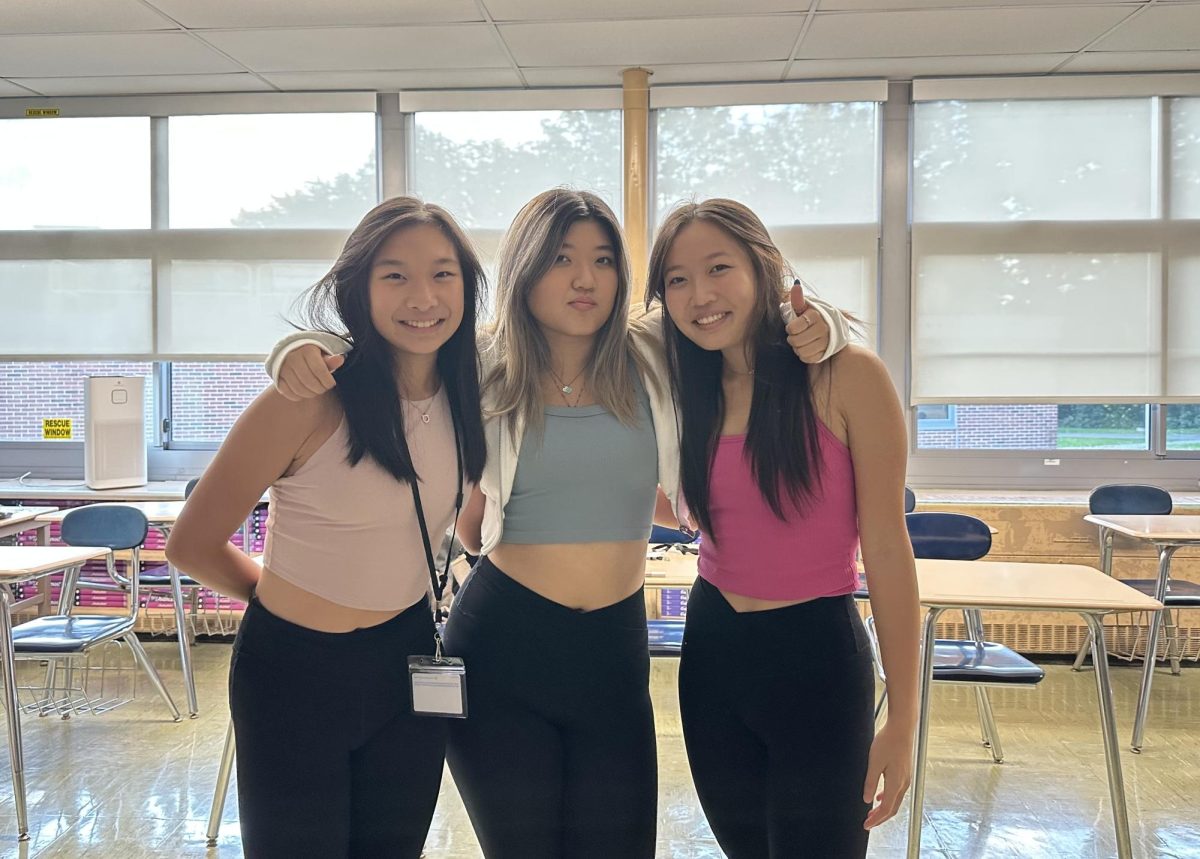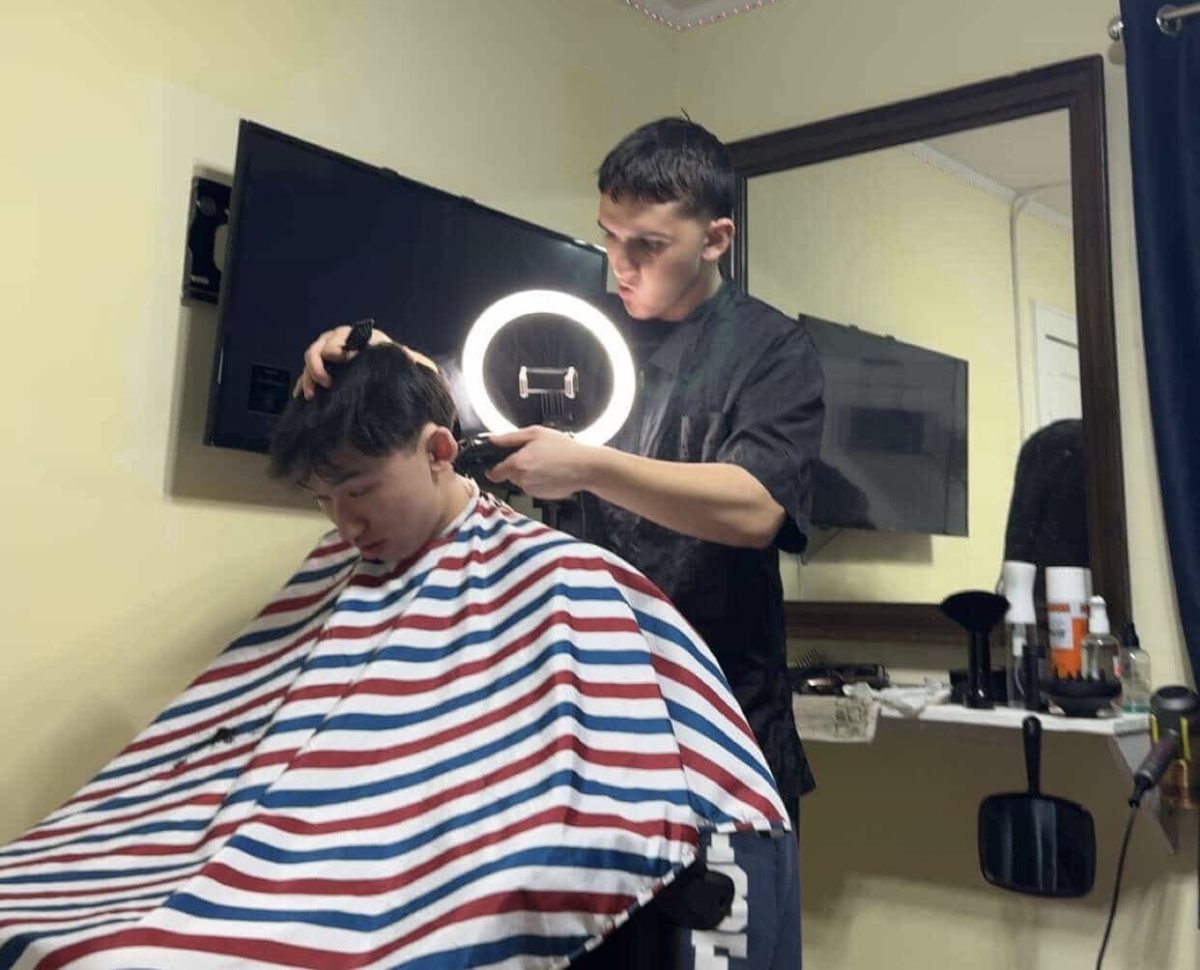Choosing her outfit in the morning is a simple process for freshman Harper Morrow. First, she finds a top that fits her mood at the moment. Next, she knows which pair of pants perfectly match her top. She’s not a fashion connoisseur, but her construction is based on another outfit– not her own, but one that she saved on Pinterest or saw on TikTok. If she feels like wearing a white tank top, she’ll immediately reach for green cargo pants to match the look because that’s what she saw on social media. For many of us, we go through a similar thought process and use social media as a source of inspiration for our outfits.
During adolescence, teenagers’ bodies and emotions are constantly changing. Inevitably, we turn to fashion to find a way to feel comfortable in our changing skin. Many teenagers go through an “awkward phase,” experimenting with different aspects of our identity to collect pieces that we hope will eventually create a picture of who we are. Oftentimes, this includes making questionable fashion choices that we later regret (do any of the clothes you used to wear make you cringe a little?), but learn to appreciate it because growth from these choices shapes us into the people we become. However, teens nowadays are skipping out on this fundamental process. Many teenagers seem to be developing their sense of fashion at an earlier age, wearing thoughtful, put-together outfits that they find on social media.
“I really started to become conscious of what I was wearing in seventh grade,” said Harper. “I got outfit inspiration from TikTok, Pinterest, my friends, and the people around me. And now, I have multiple outfits that are based off of what I see on social media.”
The world of teenage fashion is changing, but not in the way you might think. Teens haven’t suddenly acquired an eye for fashion, nor have they suddenly found a way to make a lot of money to pay for shopping sprees. But through social media, teens like Harper have become exposed to people who have already gone through the trial-and-error process—from older teenagers to people decades older than them— and have used the end point of their fashion role models as their own starting point.
The rise of smartphones and tablets invited a wave of teenagers and children to create a new life on these devices, and as a result, our society has also normalized social media usage among teenagers. A study conducted by Pew Research Center states that the majority of teens use TikTok (67%), Instagram (62%), and Snapchat (59%).
Before social media, information regarding trends and styles was limited. Teenagers relied on their peers and magazines (such as Seventeen and Teen Vogue) to give them updates about what styles were “in.” Magazines in particular were the “holy grail” of fashion expertise; they showcased celebrities, new styles, and expert opinions and trend predictions. For teens, they opened the door to what was on the other side of fashion. But now, there is no “one bible” in the way we consume fashion, according to Professor Frances Corner, head of the London College of Fashion and an advisor to Vestoj.
“The sources of our inspiration are increasingly fragmented and tailored to more specific audiences,” said Professor Corner. Not only has social media increased the range and influence of fashion trends, but it has dramatically expanded the sources of where we can draw inspiration for our own style; it has given us access to how teens in other schools, states, and even in other countries dress.
Along with this, purchasing clothes has never been easier. No longer do you have to go to the mall or send a mail-in order from a catalog, where it could take days to process your order; now, you can purchase clothing at the click of a button. On apps like Instagram, social media influencers tag clothing brands that sponsor them on their posts. These tags are connected to the brand’s social media page, which directs followers to their website, making clothing purchases only a few taps away.
“I’m an impulsive shopper– I can’t control myself. When I’m trying to pass time, I just go on a website and scroll,” said Harper. “I genuinely just do it for fun.”
As a general population, we haven’t become any richer than teens were a few decades ago. But something has caused a significant shift that has allowed us to purchase the clothes we see on other teens.
This “something” is fast fashion— cheap, trendy clothing that is mass-produced and fast-produced. Fast fashion allows teens to participate in trends without spending a lot of money, making the process of recreating outfits more affordable to the general teen population. Fast fashion brands tailor to micro-trends, which are trends that only last for a short period of time (relative to trends that correspond to a certain decade, such as the 1970s hippie era). Since micro-trends fit specific aesthetics, they are formulaic, making replicating outfits from social media easy for teens.
Although it seems that fewer and fewer teenagers are going through fashion phases in the process of finding themselves, it’s not to say that no teens are experimenting with fashion anymore. Many don’t rely on social media as a model for their outfits. Senior Abby Varughese is one of them, mentioning, “For me, I would just go shopping and think, this shirt is cool because the colors are cool. And then I would figure out the outfit by seeing what looks good in my brain.”
Some teens find inspiration from sources other than social media. “All my outfits are determined by the media I consume, including music,” said junior Emily Sang. “Sometimes, music just puts me in a certain mood, so I’ll think, this outfit is so ‘this song.’”Many teens put a lot of effort into their personal appearance, but a considerable portion of teens also don’t. Harper adds, “I feel like people in my grade either do not care at all or they choose to do a fashion show.”







